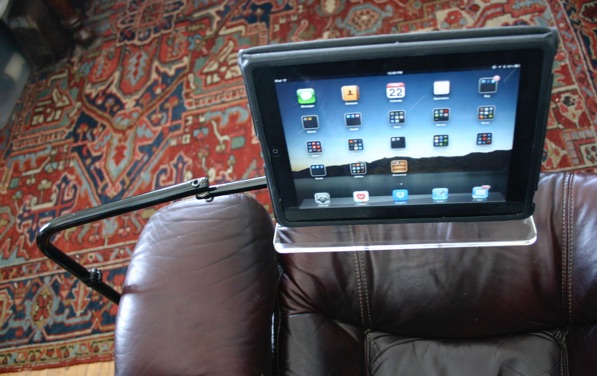

The Contour Shuttle Pro can be used with practically any software on your computer, for example, the dial may scroll in your web browser, change the brush size in Photoshop and change the font size in Microsoft Word, and the buttons can be assigned to different shortcuts in each program. Likewise, the Wacom tablet can completely replace your mouse or trackpad in every application. You’re not limited to a specific screen layout (although you need to be able to see the sliders, of course), and all of the keyboard shortcuts work as normal. Unlike some of the other gadgets we’ll review, the Shuttle and Wacom tablet are very flexible. Some recent Wacom tablets have 6 buttons and 1 dial, which could be used in a similar way, although I generally just use the pen/touchpad. Unlike some of the other gadgets I’ve tested, you can’t access Develop or Local Adjustment Presets using the Shuttle, however since you already have the pen (or mouse) in your other hand, it’s not a problem to simply click in the Presets panel. The trick is to float the cursor over the slider you want to adjust (using a mouse, trackpad or graphics tablet) and then turn the dial on the Shuttle, which gives you access to every slider in the Develop module. This is much more accurate than trying to move the slider itself, which improves efficiency. You’ll find my favorite settings for the Develop module here. The Shuttle Pro has 2 dials and 15 buttons, and you can program them to suit your needs, using any of Lightroom’s native shortcuts. Can anything knock them off the top spot? We shall see!

The post Lightroom gadgets – can they speed up your workflow? appeared first on The Lightroom Queen.įor many years, my favorite Lightroom gadgets have been the Contour Shuttle Pro v2 and Wacom Intuos Tablets.
#VSCO KEYS NEW OS SERIES#
( Sign up for the newsletter if you’d like to be notified.) First though, this gadget series will run for 4-6 weeks… next Monday is my long-term favorite: a combination of a Contour Shuttle Pro and Wacom tablet. In a few weeks time, we’ll cover more general Lightroom performance tips, including using smart previews for editing. There wasn’t a notable lag in any of the hardware tools I tested this time, although the iPad apps are dependent on the strength of the wifi network, and were therefore a little slower. In the past, some of the gadgets I’ve tested have had a frustrating lag between pressing a button and the adjustment being applied to the photo. However, the tools allow you to focus more on the photo itself, rather than having to look at the sliders, so some photographers find they end up with a better edit, although not necessarily faster. On the other hand, if you spend a long time working on each photo, the gadgets aren’t as great a timesaver. They allow accurate adjustments to be made quickly, in some cases, without even looking at the sliders. If you’ve suffered from RSI issues, they also help by splitting the work between two hands and reducing the repetitive slider movements. They’re primarily designed for photographers who are editing large numbers of photos individually. They include the Contour Shuttle Pro & Wacom tablet, Motibodo, PFixer, Palette, RPG Keys, Padroom, VSCO Keys, Paddy / AutoHotKey, Knobroom, Midi2LR and LR Control.īefore we get stuck into the reviews, however, who would benefit from using these gadgets? Over the next few weeks, I’ll be reviewing some of the most popular options currently available and summarizing the features of the others. When Lightroom was first released, my business was high volume raw processing for wedding photographers, so I’ve experimented with plenty of gadgets over the years in the quest for greater speed.

Some of these can be quite expensive, so are they worth the additional cost? And if so, which ones work best? These includes programmable keyboards and dials, midi controllers and iPad apps. Most of us are aware of the range of Develop presets, plug-ins and external editors available for Lightroom, but there’s also a range of hardware gadgets and software designed to improve our efficiency.


 0 kommentar(er)
0 kommentar(er)
